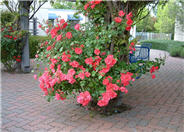
Common name:Climbing Rose
Botanical name:Rosa Climbing varieties
With its dark green foliage and fragrant flowers with full and double blooms, this upright shrub is generally grown as a vine or pillar rose. Climbing varieties come in many colors.
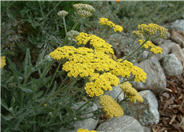
Common name:Yarrow Moonshine
Botanical name:Achillea 'Moonshine'
Pale yellow flowers appear to float on long, slender stems. Leaves are green to gray-green leaves, which are flatter and less divided than those of the Achillea millefolium. Yarrows propagate easily from rooted cuttings or division, which should be performed in the early spring or fall. Following bloom, one should dead head the plant and divide the clumps when it appears crowded.
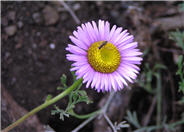
Common name:Blue Beach Aster, Seaside Daisy
Botanical name:Erigeron glaucus
This perennial will grow 1' tall and 1.5' wide. It has blue green foliage and lavender flowers that bloom in spring and summer.
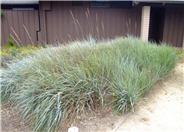
Common name:Canyon Prince Wild Rye
Botanical name:Leymus condensatus 'Canyon Prince'
One of the best known and utilized native grass selections in Southern California, this beautiful, blue gray foliage spreads out 3'-4' or more. It will reach a height of 2'-3'. It rarely flowers. It does spread by rhizomes although not as vigorously as some closely related species. It can be extremely drought tolerant and care must be taken not to over water this species as it can rot from the center. Otherwise, it is carefree and requires virtually no maintenance.
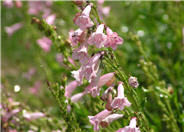
Common name:Beard Tongue
Botanical name:Penstemon 'Apple Blossom'
The Border Penstemon is a showy perennial that remains 2'-4' high. It has light pink, tubular blossoms on long flower spikes from spring through the fall and is hardy to 15 degrees F. It is also drought tolerant, and attracts hummingbirds.
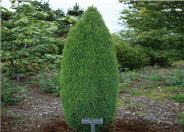
Common name:Dwarf Columnar Juniper
Botanical name:Juniperus communis 'Compressa''
This larger shrub will grow 12'-25' tall and has small, scaled, dark green leaves. Junipers are highly combustible plants.
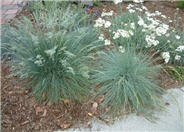
Common name:Blue Fescue
Botanical name:Festuca glauca
This ground cover/grass will grow less than 1' tall and has small, blue green leaves.
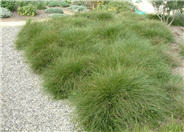
Common name:Slender Sedge
Botanical name:Carex praegracilis
California native, rhizomatous. Native on alkaline soil. Low and adapted to a lawn use. Sun or shade. Somewhat drought tolerant. Will take some traffic. It is commonly found in meadows, open areas, marshes and wetlands.
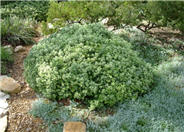
Common name:Compact Karo
Botanical name:Pittosporum crassifolium 'Compactum'
Pittosporum crassifolium 'Nana' is an evergreen shrub or tree. It can reach 25' tall and 20' wide in 8-10 years. Branches are densely clothed in gray green, with 1"-2" long leaves that have rounded ends. It produces maroon flowers in late spring.
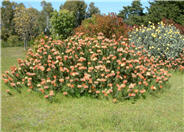
Common name:Nodding Pincushion
Botanical name:Leucospermum cordifolium
This shrub will grow 4-6' high and as wide and produces beautiful coral blooms. It will do best in moderately moist soil and full sun.
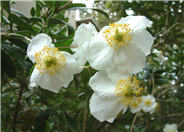
Common name:Bush Anemone
Botanical name:Carpenteria californica
This CA native is a dense, clean evergreen shrub that grows 4'-8' high and 5' wide. It is tolerant of sun or shade. It has white fragrant flowers from May through August.
Managing Your Soil
Healthy soil is the cornerstone of a vibrant landscape. It provides oxygen and nutrients vital to plant growth and sustenance. It provides protection from the sun and stability for root systems.
Click in the green box for more information
| Designer: Carmichael Environmental | Mediterranean Home and Garden |
Photographer: GardenSoft |
Soils and Compost:
Practice grass-cycling by leaving short grass clippings on lawns after mowing, so that nutrients and organic matter are returned to the soil.
Water Saving Tip:
Mulching and adding compost to soil can minimize evaporation and help soil absorb and store water.
Integrated Pest Management:
Remove irrigation water and fertilizer from areas where you don't want weeds to grow.

